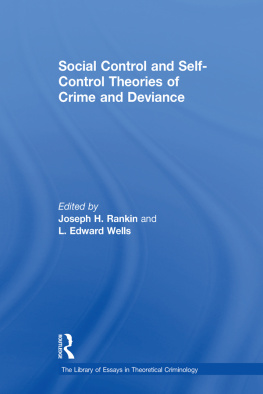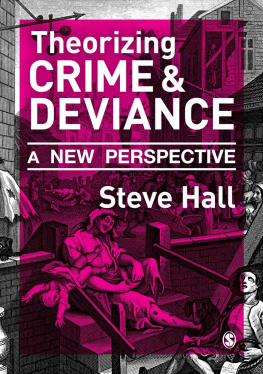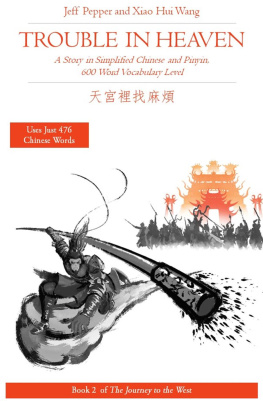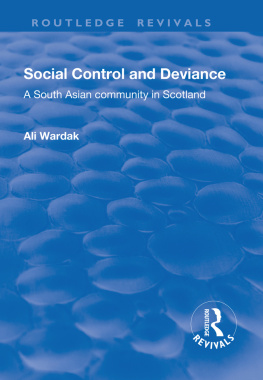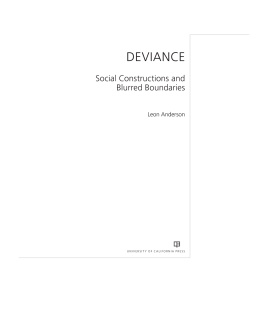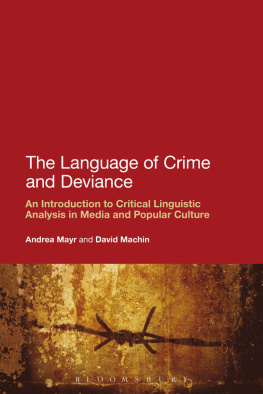First published 1996 by Transaction Publishers
Published 2017 by Routledge
2 Park Square, Milton Park, Abingdon, Oxon OX14 4RN
711 Third Avenue, New York, NY 10017, USA
Routledge is an imprint of the Taylor & Francis Group, an informa business
Copyright 1996 by Taylor & Francis.
All rights reserved. No part of this book may be reprinted or reproduced or utilised in any form or by any electronic, mechanical, or other means, now known or hereafter invented, including photocopying and recording, or in any information storage or retrieval system, without permission in writing from the publishers.
Notice:
Product or corporate names may be trademarks or registered trademarks, and are used only for identification and explanation without intent to infringe.
Library of Congress Catalog Number: 99-13732
Library of Congress Cataloging-in-Publication Data
Making trouble: cultural constructions of crime, deviance, and control / Jeff
Ferrell and Neil Websdale, editors.
p. cm.(Social problems and social issues)
Includes bibliographical references and index.
ISBN 0-202-30617-8 (alk. paper). ISBN 0-202-30618-6 (pbk.: alk. paper) 1. Criminology. 2. Deviant behavior. 3. Criminal behavior. 4. Crime in mass media. 5. Social control. I. Ferrell, Jeff. II. Websdale, Neil. III. Series.
HV6001.M35 1999
364dc21 99-13732
CIP
ISBN 13: 978-0-202-30618-6 (pbk)
To Karen: Twenty thousand roads...
JF
To Amy and the continuing tangle of matter and ghost.
NW
There is no escape from the politics of representation
Stuart Hall
Making Trouble reflects some interesting developments in criminology and related fields. Over the past decade or so, more and more scholars in criminology, sociology, and criminal justice have taken as their subject of study not simply the domains of crime, deviance, and social control, but instead the complex, mediated dynamics that construct the meaning of these domains. As this subtle but significant shift in subject matter has continued, a second analytic shift has also emerged: media and cultural analysis has begun to seep into the core concepts and practices of these disciplines. Thus, Making Trouble developed out of our work as program committee members for the 1997 meetings of the Academy of Criminal Justice Sciences, put in charge of organizing a series of sessions on Media, Culture, and Crime. The enthusiastic response to these sessions, and to our broader invitation for submissions of research in this area, produced the fine works collected in Making Trouble.
We are especially pleased that these works confront critical issues in the cultural construction of crime, deviance, and control. By intention, the works that we have incorporated here address the mythic and often misleading manufacture of public images; the pervasive and differential construction of meaning along lines of gender, ethnicity, and age; the migration of imagery and meaning across real and imagined borders; the contested emergence of alternative or illicit media; and the parallel evolution of new forms of social and legal control. It is our hope that taken collectively, then, these works begin to expose the complex cultural processes and mediated politics involved in making trouble.
Portions of , Materials for Making Trouble, were adapted from Jeff Ferrell, Cultural Criminology, Annual Review of Sociology, Vol. 25, 1999. We thank Annual Reviews.
In bringing this project to completion, we thank especially Chris Schubert, for her remarkable collegiality and consistently professional assistance; Joel Best, editor of Aldine de Gruyters highly regarded Social Problems and Social Issues series; and Richard Koffler, executive editor, and the staff at Aldine de Gruyter.
Materials for Making Trouble
JEFF FERRELL and NEIL WEBSDALE
INTRODUCTION
Making Trouble develops and expands an intellectual endeavor that can be denoted by the shorthand term cultural criminologyshorthand for a mode of analysis that embodies sensitivities to image, meaning, and representation in the study of deviance, crime, and control. This notion of cultural criminology references both specific perspectives and broader orientations that have emerged in criminology, sociology, and criminal justice over the past few years, and that inform this collection. Most specifically, cultural criminology represents a perspective developed by Ferrell (1995c) and Ferrell and Sanders (1995), and likewise employed by Redhead (1995) and others (Kane 1998a), which explores the convergence of cultural and criminal processes in contemporary social life. More broadly, cultural criminology references the increasing analytic attention that many criminologists now give to popular culture constructions, and especially mass media constructions, of crime and crime control. It in turn highlights the emergence of this general area of media and cultural inquiry as a relatively distinct domain within criminology, as evidenced, for example, by the number of recently published collections undertaking explorations of media, culture, and crime (Anderson and Floward 1998; Bailey and Hale 1998; Barak 1994; Ferrell and Sanders 1995; Kidd-Hewitt and Osborne 1995; Potter and Kappeler 1998). Most broadly, the existence of a concept such as cultural criminology underscores the steady seepage in recent years of cultural and media analysis into the traditional domains of criminological inquiry, such that criminologists increasingly utilize this style of analysis to explore any number of conventional criminological subjects. As this collection shows, these range across the substantive domain of criminology, from drug use, interpersonal violence, and terrorism to policing, delinquency, and predatory crime.
HISTORICAL AND THEORETICAL FRAMES
At its most basic, the sort of cultural criminology utilized in Making Trouble attempts to integrate the fields of criminology and cultural studies or, put differently, to import the insights of cultural studies into contemporary criminology. Given this, much contemporary scholarship in cultural criminology takes as its foundation perspectives that emerged out of the British/Birmingham school of cultural studies and the British new criminology (Taylor, Walton, and Young 1973) of the 1970s. The work of Hebdige (1979, 1988), Hall and Jefferson (1976), Clarke (1976), McRobbie (1980), Willis (1977, 1990), and others has attuned cultural criminologists to the subtle, situated dynamics of deviant and criminal subcultures, and to the importance of symbolism and style in shaping internal and external constructions of subcultural meaning and identity. Similarly, the work of Cohen ([1972] 1980), Cohen and Young (1973), Hall, Critcher, Jefferson, Clarke, and Roberts (1978), and others has influenced contemporary understandings of the mass medias role in constructing the reality of crime and deviance, and in generating new forms of social and legal control.


